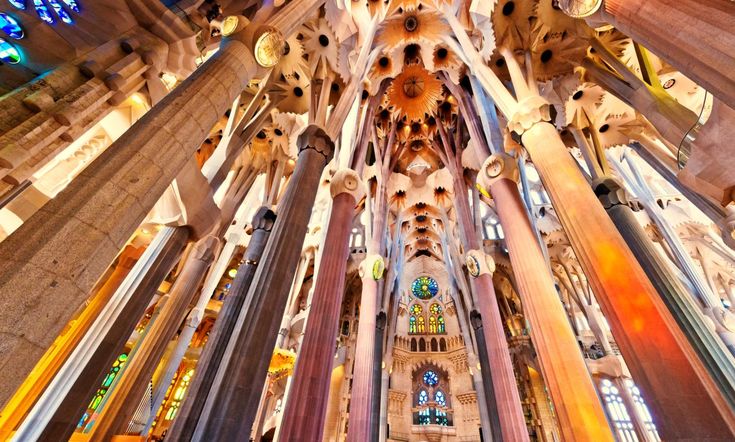A Monument to Catalan Identity: La Sagrada Familia Basilica | bizFlats
Located in the heart of Barcelona, La Sagrada Familia Basilica is a monument to Catalan culture dating back to 1882. Embracing the city and nation’s deep roots in Catholicism and talent in both design and architecture, this World Heritage Site is a beautiful and breathtaking symbol of both national and local identity. Although it is not finished, the ongoing project surrounding the Basilica’s creation is part of its intrigue and beauty. Wondering, why was La Sagrada Familia built, or when will La Sagrada Familia be finished? Read on to learn more!
Table of Contents
La Sagrada Familia Construction
La Sagrada Familia Basilica was designed in part by the famous Catalan architect, Antoni Gaudi, with construction beginning in 1882. The next year Gaudi took the project over completely to see that his vision was fulfilled by the best means possible. He was in charge of it until his death in 1926, having completed less than a quarter of the building. The construction progressed slowly, waiting on private donations to continue, and was derailed completely by the Spanish Civil War. In the 1950s the gradual building began again, and the half-way mark was recently reached in 2010. The Basilica is projected to be completely finished by 2026, and has been expedited with the use of computer modeling and other new technologies. Since Gaudi’s death the construction has been a point of contention among Catalan people who wonder if the original vision is being carried out or not. Nevertheless, the project goes on. La Sagrada Familia’s completion date is expected to be 2026, the 100-year anniversary of Gaudi’s death.
Design
A mix between Spanish Late Gothic, Catalan Modernism and a Art Nouveau styles, La Sagrada Familia Basilica was the dream of a bookseller who returned from the Vatican inspired to build a Gothic revival church. Gaudi greatly influenced the design when he took over the project, being inspired mostly by nature.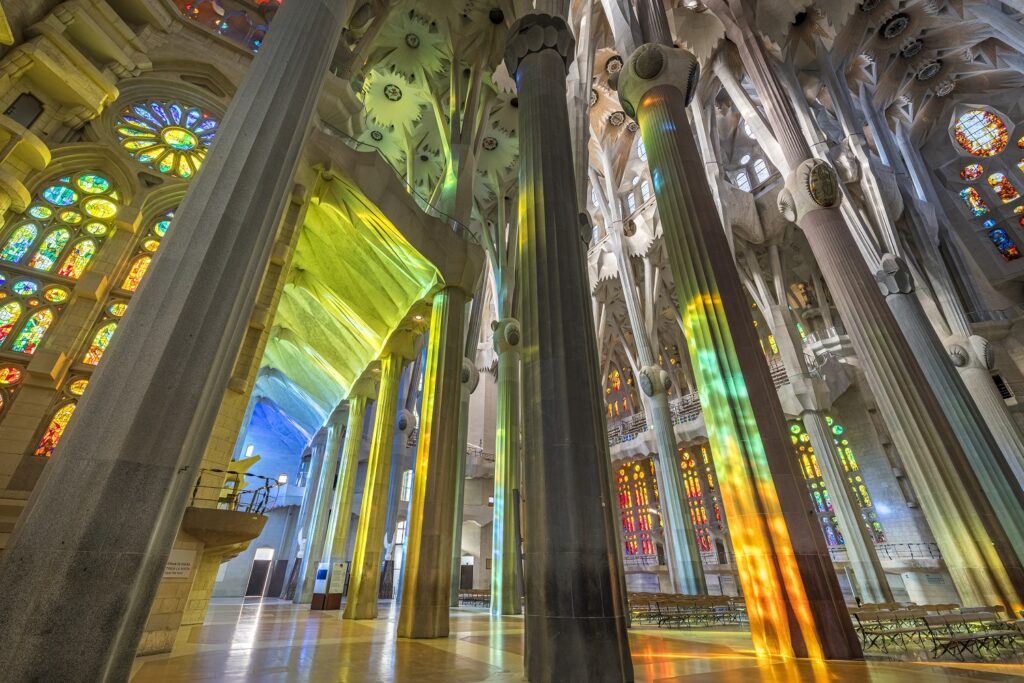
Visiting
There are multiple ticket types available for purchase online and at the box office. You can choose whether to take a guided tour, an audio tour, or just enter and show yourself around. Visitors can also choose to explore more of La Sagrada Familia Basilica like the House Museum or towers. Group tours are also available. Of the things to see are the museum, exhibitions, galleries and also the occasional live music event. The Basilica is always a place for prayer and worship, and mass times are posted on the website.
Stay in Barcelona
For those visiting the city, bizFlats offers diverse options for short term rental properties throughout Barcelona.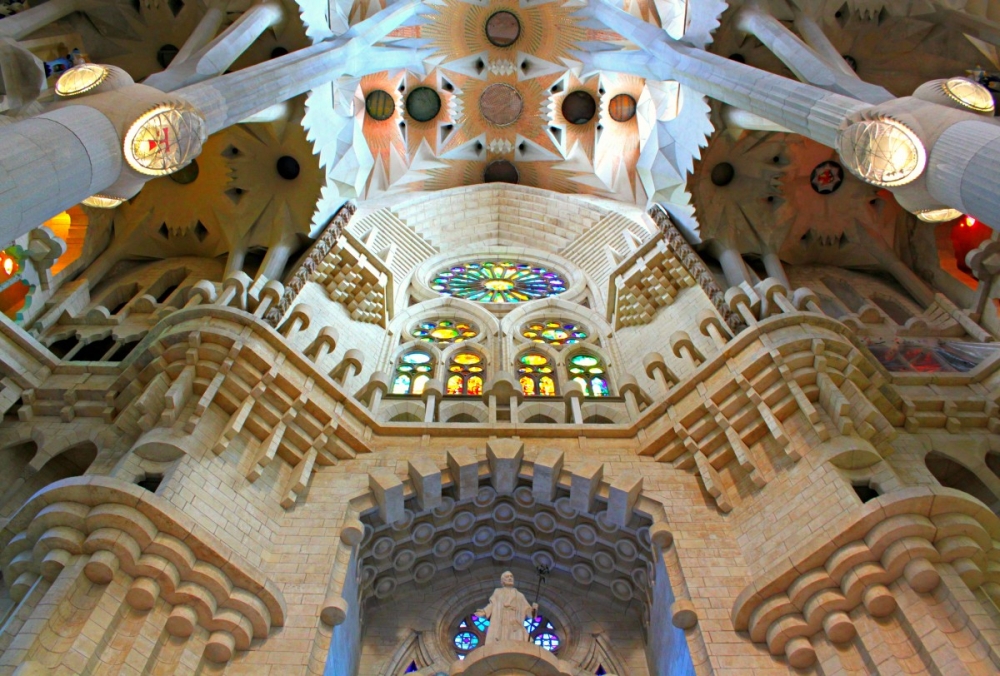
There are few experiences around Barcelona that embrace the history of Catalan culture like a trip to La Sagrada Familia Basilica. No matter the reason for your trip to Barcelona, you definitely want to at least take a walk past this truly spectacular site.
The Completion of Gaudi’s Sagrada Familia Is a Sort of Death – SURFACE
Architecture
After six generations, the architect’s signature work is heading towards completion—but the laying of the final stone will be as much a cause for celebration as the end of something rare and beautiful.
By Marianela D’Aprile
September 16, 2019
Photo Courtesy Fundació Junta Constructora de la Sagrada Família
…
For over 130 years, Antoni Gaudí’s Temple Expiatori de la Sagrada Família—a hulking, Modernisme Roman Catholic basilica in Barcelona—has been under construction, a life-sized sneak-preview of what it could one day be.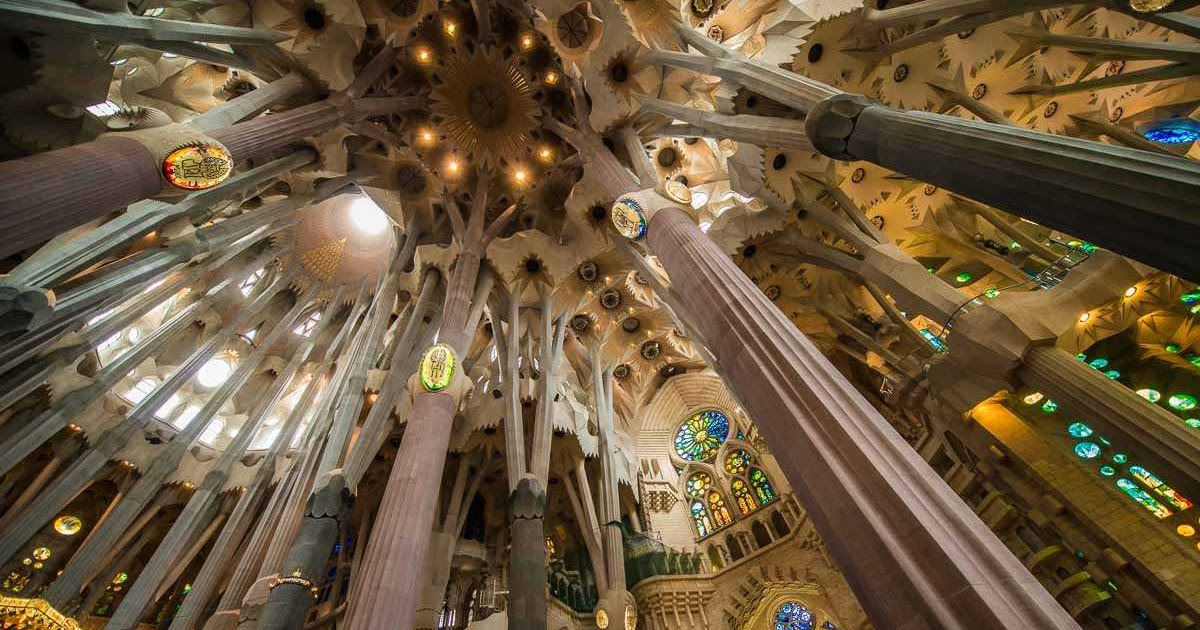
It won’t be in-progress for much longer, though (theoretically). Over a century after the laying of its first stone, the Sagrada Família finally has an official green light for completion after the foundation managing its construction paid the city $41 million for all previous work which, fascinatingly, was done without a permit. After generations of starts, stops, and attacks by arsonists, it’s slated to finish in 2026, 100 years after the death of Gaudí, who committed his last 44 years to it.
The permit’s receipt marks, in a way, the beginning of the end. The open-ended lifespan of the process created a seemingly infinite temporal space within which the myth of the Sagrada Família came to overshadow its reality.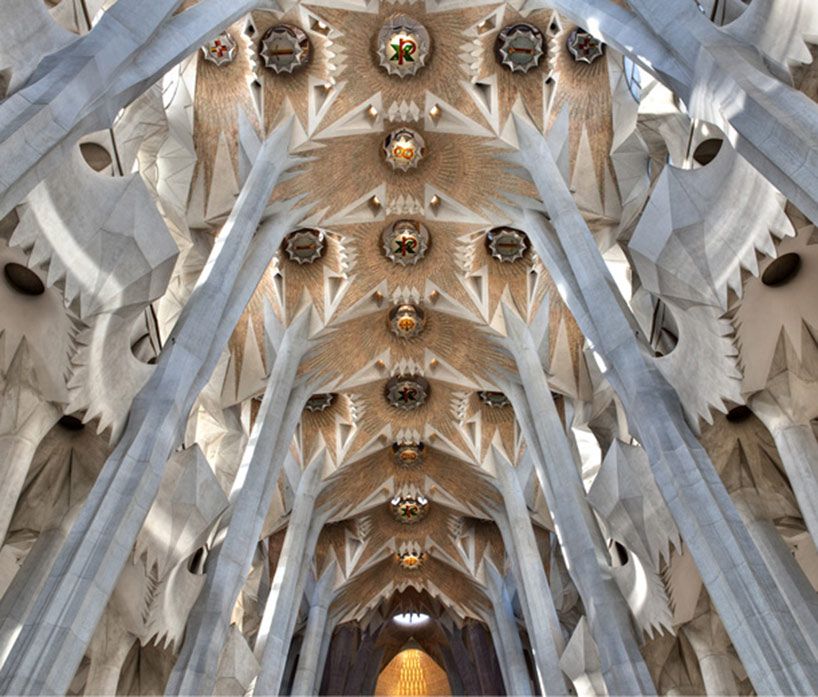
5
Architecture
Sagrada Famíla Under Construction
Photo Courtesy Fundació Junta Constructora de la Sagrada Famíla
…
Sagrada Famíla Under Construction
Photo Courtesy Fundació Junta Constructora de la Sagrada Família
Photo Courtesy Fundació Junta Constructora de la Sagrada Família
…
Sagrada Famíla Under Construction
Photo Courtesy Fundació Junta Constructora de la Sagrada Família
Photo Courtesy Fundació Junta Constructora de la Sagrada Família
…
Sagrada Famíla Under Construction
Photo Courtesy Fundació Junta Constructora de la Sagrada Família
Photo Courtesy Fundació Junta Constructora de la Sagrada Família
…
Sagrada Famíla Under Construction
Photo Courtesy Fundació Junta Constructora de la Sagrada Família
Photo Courtesy Fundació Junta Constructora de la Sagrada Família
…
Sagrada Famíla Under Construction
Photo Courtesy Fundació Junta Constructora de la Sagrada Família
Photo Courtesy Fundació Junta Constructora de la Sagrada Família
…
In that bubble of time, it has also come to represent an investment in the built environment to which we have grown unaccustomed: a no-holds-barred injection of resources into the cultivation of the public life and civic expression of a city.
As the end nears, how will Sagrada Família change? Will people flock to it to get a final glimpse of its in-progress state? Years from now, will photographs of the still-incomplete building become collectibles? How will the shift—from undone to done, from moving to static—change our valuing of the building and the city? Will it become, as its last piece is put in place, an instant relic?
Future generations won’t be a part of its history in the same way that we, and those before us, have been. Their relationship to Sagrada Família will be static; they won’t see themselves growing and evolving alongside it. Still, all those years won’t have been in vain.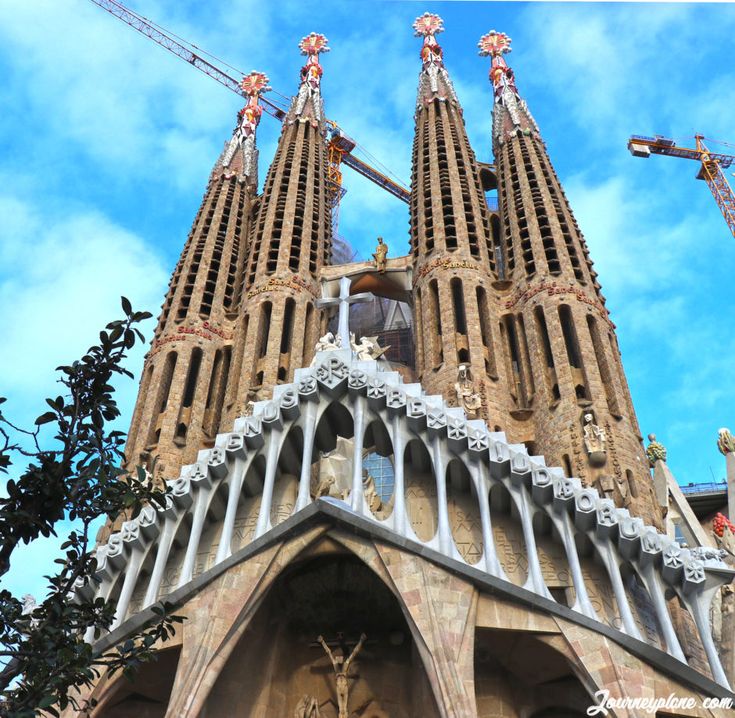
All Stories
Previous Next
description, address, time and opening hours 2023
The Sagrada Familia is known all over the world. This is one of the most important and famous creations of the architect Antonio Gaudi. It began to be built in 1882 and is still under construction. But, despite this, the Sagrada Familia impresses with its majesty, power and extraordinary beauty, which is characteristic of everything that Antonio Gaudi once did.
Location
Carrer de Mallorca, 401, 08013
Opening hours
November-February: from 09:00 to 18:00. March: from 09:00 to 19:00. April-September: from 09:00 to 20:00. October: from 09:00 to 19:00. December 25, 26, January 1, 6: from 09:00 to 14:00
Website
https://sagradafamilia.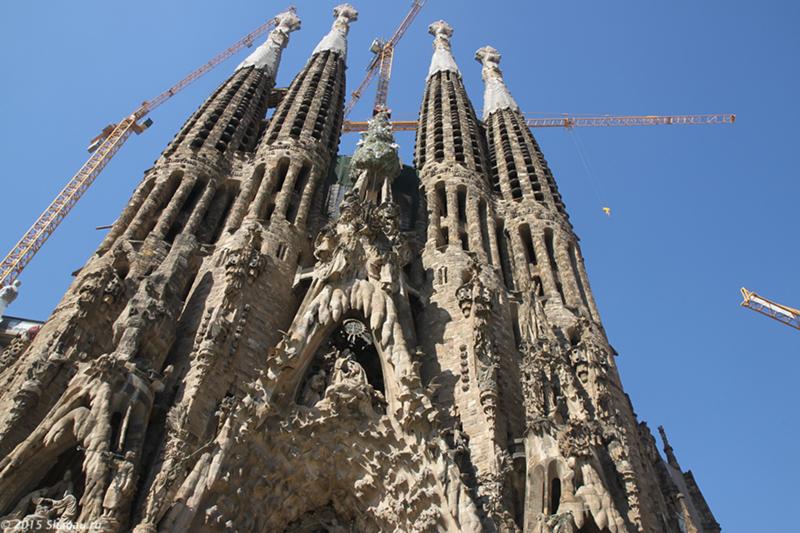
Working hours:
November–February l: from 09:00 to 18:00; March: from 09:00 to 19:00; April-September: from 09:00 to 20:00; October: from 09:00 to 19:00; December 25, 26, January 1, 6: from 09:00 to 14:00
Address: Carrer de Mallorca, 401, 08013 Barcelona
Ticket price: from 15 to 29 euros
Disabled people and children under 10 years old – free of charge
The history of the world’s most famous long-term construction
The temple was originally built and the architect Francisco del Villara. In 1874, the land for construction was purchased, and work on the project was already in full swing, but in the end, Villara abandoned this work. So the future of the Sagrada Familia was in the hands of Antonio Gaudí.
Start of construction of the temple. Photo: http://s2.travelask.ru
From the very beginning, the architect did not have big plans for this project, but after he received a fairly large donation for the construction, he decided to completely change the plan of the future temple.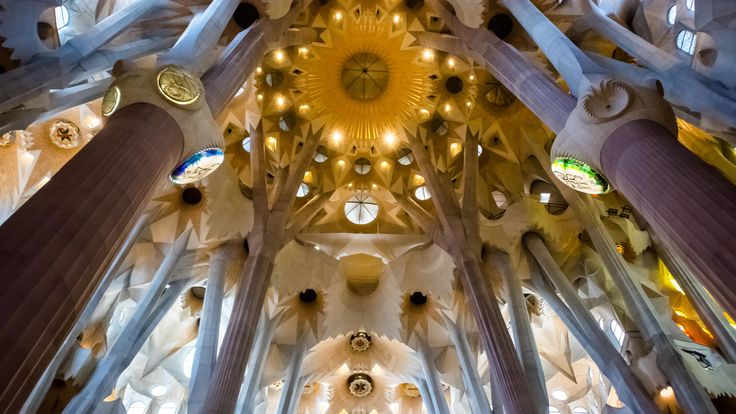
Gaudí was known as a very pious person, and therefore put a lot of meanings into the Sagrada Familia. He was ignited with the idea of creating a cathedral that would become the embodiment of the New Testament. In continuous work on the project, he spent the last 8 years of his life.
Inside the Sagrada Familia. http://s2.travelask.ru
Gaudi even moved to a small room on the territory of the unfinished temple, where he worked on drawings. But he did not have time to finish the construction, and all the sketches and plans were lost during the Spanish Civil War.
Present and future of the Sagrada Familia
Now the construction of the temple continues through donations and ticket sales for excursions. The builders promise that by 2026 we will finally be able to see the completed cathedral.
Most of the Sagrada Familia is open to the public, and in 2010 Pope Benedict XVI even consecrated the Sagrada Familia and since then it has been officially allowed to hold daily services.
What attracts thousands of tourists to the unfinished cathedral? The point is its special structure. If you look at the Sagrada Familia from afar, you will notice its amazing resemblance to an organ. This is how Gaudi himself conceived – he wanted the towers to resonate during the wind and create the music of Creation. At the moment, out of the planned 18 towers, 8 have been built, but even they amaze the imagination with their appearance alone.
The façade of the temple is decorated with various sculptures, which Gaudí created himself, as always inspired by wildlife.
Sculptures on the temple. https://travelimho.ru
Now everyone can buy a ticket for one of the temple tours. You can enjoy the best views of Barcelona from the Sagrada Familia tower, explore the temple on your own or with an audio guide. At the cathedral there is a small museum of Antonio Gaudi, visiting which you can learn about how the great architect worked and lived. Here is the tomb of a talented master.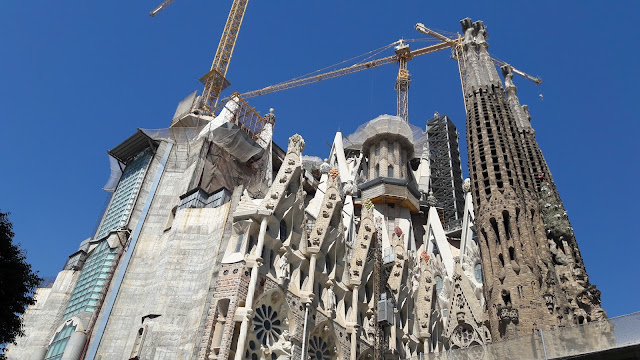
Sagrada Familia is one of the main places not only for the natives of Barcelona, but also for everyone who comes to study the history of this city and feel its atmosphere.
How to get there
You can get to the Sagrada Familia by almost any public transport. You need the stop “Sagrada Familia”
If you are traveling by metro, then you need lines L2 and L5, and if it is more convenient for you to take a bus, then routes no. 19, 33, 34, 43, 44, 50, 51, B20 and tourist bus B24.
Bus and pedestrian
All of Barcelona in 3.5 hours from the bus window.
Read more
Walking
Journey through the fictional worlds of the famous Catalan architect Antoni Gaudí
Read more
Walking
You will learn how to navigate the city and see the main sights near your hotel.
Read more
Walking
Walking the streets and squares of Barcelona with a guide (local) is the best way to feel, understand and feel the spirit of the city and its people.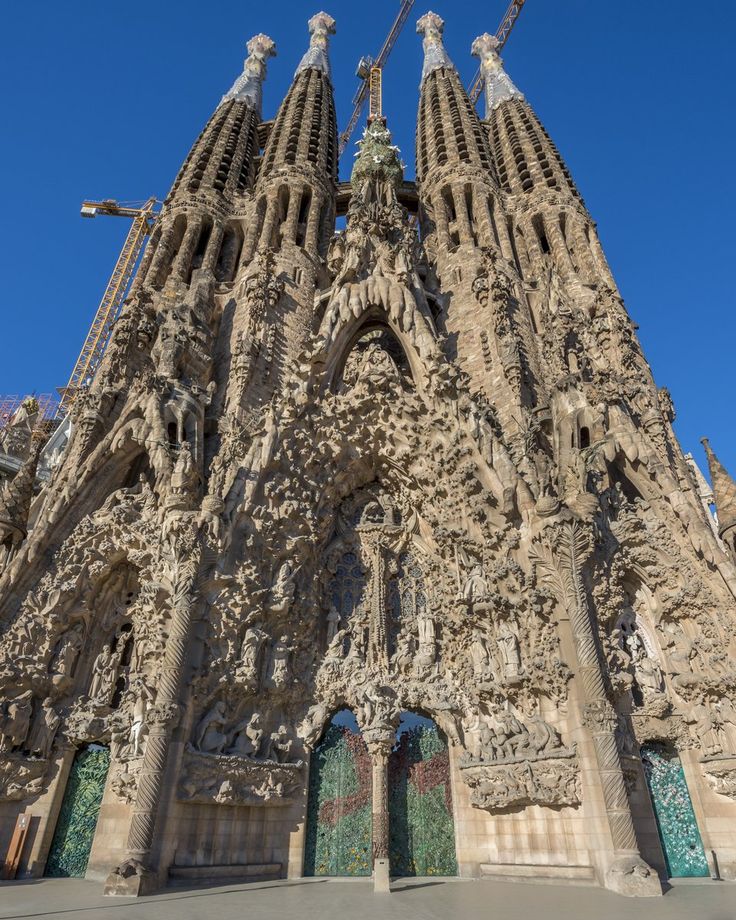
More
Show more
Spanish Village
Read more
Palace of the Government of Catalonia
Read more
Casa Batlló
Read more
Palace of Catalan Music
Read more
Palace Güell
Read more
Rambla
Read more
Archaeological Museum
Read more
Montserrat Monastery
Read more
Login to the site
Registration on the site
Recover password
Sagrada Familia (Sagrada Familia) in Barcelona
Trip2Trip / Europe / Spain / Barcelona /
Sagrada Familia (Sagrada Familia), Barcelona
What is the Sagrada Familia? Is this the symbol of Barcelona? Yes.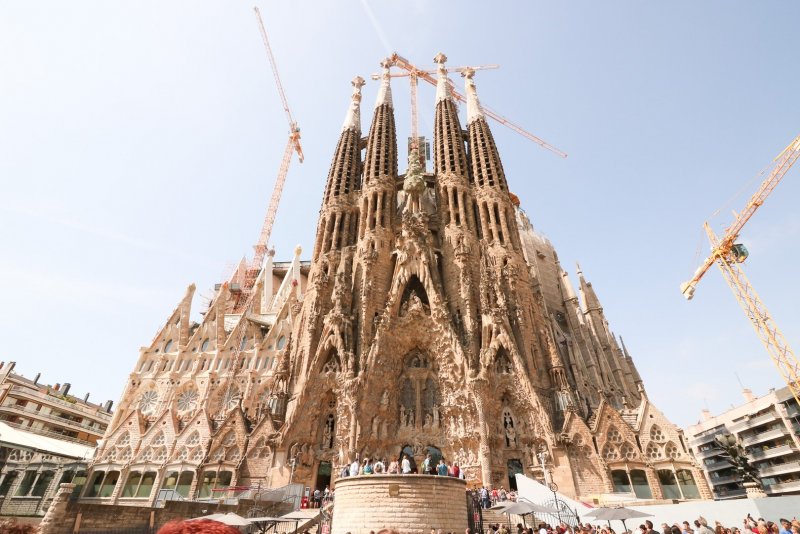
Antonio Gaudí is a modernist, and everything he built became modernism. The intentional rejection of straight lines and the sandy color give the cathedral an association with a castle on the beach, which is about to be covered by a wave.
What the Sagrada Familia is not, is a cathedral. From the point of view of the Catholic Church, this is just an ordinary church, and its official name is the Expiatory Church of the Holy Family.
The importance of the temple is so high that already unfinished in 2005 it was included in the UNESCO list. In 2008, a group of people spoke out against such completion of the cathedral. They felt that the current architects perverted Gaudí’s original idea.
The history of the construction of the Sagrada Familia
It is interesting that initially the church was built by a certain Francisco del Villar, and he had a temple in the form of a Latin cross. He nurtured this idea since 1874, and laid the first stone in 1882.
However, already in 1883 del Villara was replaced by Antonio Gaudi and immediately remodeled the entire temple. The future cathedral was immediately overgrown with its famous towers, and each architectural line was filled with deep symbolism.
Gaudi himself collected donations for his main brainchild, and due to lack of money, the work was very slow.
In 1891 he completed the crypt. In 1900 – the facade of the Nativity, the chapel and part of the inner wall. In 1911, the Passion façade and the Glory façade.
After Gaudí’s death, Domenech Sugranes became the architect. Before his death in 1938, he managed to erect three bell towers for the Nativity facade and a ceramic cypress at the main entrance.
Due to the outbreak of the Spanish Civil War, construction stopped until 1952.
In 1977 the Passion façade was completed. In 1986 – sculptural decorations and stained glass windows.
Construction has not been completed to this day. However, for a cathedral (and in terms of architecture it is a cathedral) this is not a deadline. The Sagrada Familia is being built with private donations. In general, it is expected that the Sagrada Familia will be completed in 2026.
Construction is also delayed due to the fact that each block requires individual trimming and fitting.
About the architecture of the Sagrada Familia
Antonio Gaudi knew and remembered that the cathedral is a book that the parishioners will read when they look at the architecture during Sunday sermons. And therefore, in every architectural gesture, he embodied a verse from the Bible. For example, the Sagrada Familia has twelve towers – according to the number of the closest apostles of Christ.

